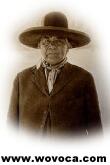|
||||||||||||||||||
Press CTRL+D to bookmark this page! |
||||||||||||||||||
 |
||||||||||||||||||
| Click here for
EarthMotherCrying Wallpaper |
||||||||||||||||||
MORMON Massacre Mountain Meadows : Forensic Analysis Supports Paiute Tribe's Claim of Passive Role |
||||||||||||||||||
|
||||||||||||||||||
|
||||||||||||||||||
|
|
||||||||||||||||||
|
||||||||||||||||||
|
||||||||||||||||||
|
||||||||||||||||||
|
||||||||||||||||||
MORMON Massacre at Mountain Meadows: Forensic Analysis Supports Paiute Tribe's Claim of Passive Role
BY CHRISTOPHER SMITH (c) THE SALT LAKE TRIBUNE January 21, 2001
A new forensic study lends credence to Paiute Indian claims that the tribe did not participate in the infamous Mountain Meadows Massacre of 1857 to the extent history has recorded. The analysis of bones from some of the 120 emigrants in a California-bound wagon train who were slaughtered at Mountain Meadows also shows some of the remains have distinct American Indian characteristics. Those traits may be attributed to the mixed Cherokee ancestry of many of the emigrants from northwestern Arkansas who were murdered. The conclusion could trigger various state and federal laws requiring the exhumation of the remains to determine which tribes should be given the non-Caucasian remains for repatriation. The remains were uncovered inadvertently during construction of a monument over the mass grave and subsequently reburied in a 1999 ceremony led by LDS Church President Gordon
B. Hinckley. Utah American Indian officials say they plan to study the report to determine what steps might be taken, but were pleased with implications of
the new evidence for the Paiute Tribe. "It is ludicrous to keep saying the Indians jumped out of the bushes and attacked these people," says Forrest Cuch, director of the Utah Division of Indian Affairs. "I'm completely with [researchers] on the findings." Prepared by researchers at the University of Utah Department of Anthropology, the 200-page skeletal-trauma analysis was delivered in July to Brigham Young University's Office of Public Archaeology for inclusion in a
final report to state history officials. That report was due last August under the customary one-year-from-excavation deadline of a state archaeological permit, but it has yet to be submitted to the Antiquities Section of the Utah Division of History. The Salt Lake Tribune recently obtained a draft copy of the University of Utah portion of the study, in which skeletal biologists used forensic anthropology techniques to assess age, sex and approximate cause of
death of the massacre victims. The report represents the first scientific analysis of a crime of civil terrorism that has few parallels in modern American history. Generally accepted versions of the massacre hold that members of the wagon train from Arkansas were slaughtered by Mormon militiamen and their Paiute Indian confederates in early September 1857 as the emigrants were encamped at Mountain Meadows, a broad valley in southwestern Utah near present-day Enterprise along the Old Spanish Trail.
War Hysteria: At the time, Mormons were being rallied by church leaders into a state of war hysteria against the federal government, which was marching troops to Utah to replace LDS Prophet Brigham Young as territorial
governor. After initially repelling the first assault, the emigrants endured a four-day siege. With food and water running low, local Mormon officials convinced the emigrants on Sept. 11 to surrender their arms in exchange for safe passage to Cedar City. Instead, at a pre-arranged command, the emigrant men were executed by their Mormon escorts while Paiute Indians lying in wait murdered the women and children. Or so the story has been told. Details, motive and blame in the massacre have been a source of passionate disagreement, something the U. researchers noted in preparing
their analysis of the victims' remains. "As with most mass killings, emotion and propaganda surround this historic event, often with greatly disparate views," wrote principal investigator Shannon Novak, a native Utahn. "With time, interpretations often become bipolar -- either romanticized or exaggerated depending on which side is recounting the event. Physical evidence can often provide a reality check, requiring all sides to reconsider what they have 'known to be true.' "
First Findings: The Tribune reported Novak's preliminary findings from the massacre remains last March. Her research was prematurely terminated when Gov. Mike Leavitt asked state officials to order immediate return of the bones to BYU for the reburial ceremony when Hinckley dedicated a new monument to the victims. In an e-mail sent to state history officials, the governor -- whose ancestor Dudley Leavitt was one of the participants in the slaughter -- wrote he did not want controversy to highlight "the rather good-spirited
attempt to put [the massacre] behind us." Novak's final study, which was presented in October to the Midwest Bioarchaeology and Forensic Anthropology Association conference in Missouri, upholds most of those preliminary findings. At least 28 victims were discerned from the 2,605 pieces of bone, most of which were broken by a backhoe digging a foundation for the new monument. The skulls of 18 victims
were partially reconstructed for trauma analysis. Those findings, in some points, differ with the generally accepted historical version of the massacre. "All accounts agree that it was quickly over," wrote Mormon historian Juanita Brooks in her landmark 1950 study, The Mountain Meadows Massacre. "Most of the emigrant men fell at the first volley, and those who started to run were quickly shot down by Mormons or by Indians. The savages, far outnumbering the women and children, leaped from the brush on both sides of the road at once and, stimulated by the shrieks and screams, fell upon their victims with knives and hatchets and soon quieted them."
No Knives: Novak's study of the bones, however, found no evidence of sharp-force trauma, such as that caused by a blow from a knife or hatchet. The researcher notes that "skeletal trauma only records lesions that
penetrate to the bone." The majority of gunshot wounds were in the heads of young adult males, although one child, aged 10-15, also was shot in the head. That gunshot victim "suggests the killing of women and children may have been more complicated than accounts described in the diaries," wrote Novak, who has
since joined the faculty of Indiana State University. Another indication of women and children being executed is the fractured palate of a female, aged 18-22. The pattern of the bone fracture, along with the blackened and burned crowns of the woman's teeth, is consistent with a
gunshot wound. Suggestions that most emigrant men were shot in the back of the head and from the rear while fleeing also are questioned by bullet trajectories through the skulls. Six individuals were shot in the head from behind, while
five were shot in frontal assaults. Recognizing the new scientific evidence is bound to prompt a reassessment of long-held views of Paiute Indian involvement in the massacre, Novak cautioned: "Obviously, skeletal trauma cannot corroborate ethnically who was responsible for the shooting and whom for the beating."
No Role: Still, Paiute leaders say the forensic evidence supports their oral traditions that tribal members had little or no role in the killings. In 1998, tribal researchers interviewed elders about the massacre and the Utah divisions of History and Indian Affairs recently published some of those accounts in the new book edited by Cuch, A History of Utah's American
Indians. "Many Paiute leaders (among others) believe and claim that, contrary to most published accounts, Indians did not participate in the initial attack on the wagon train nor in the subsequent murder of its inhabitants," wrote Weber State University cultural anthropologist Ron Holt and Paiute Tribe Education Director Gary Tom. "Accounts collected by the Paiute Tribe call into question this recounting of events, claiming that in great part Paiutes have been wrongfully blamed for assisting in something that was not of their making."
Untruths: As Church of Jesus Christ of Latter-day Saints President Hinckley has taken historic steps to honor the victims of the Mountain Meadows Massacre through erection of two monuments at the site in the past decade, Paiute tribal leaders have viewed those exercises as perpetuating
falsehoods. Hinckley's declaration at the 1999 dedication -- "That which we have done here must never be construed as an acknowledgement of the part of the church of any complicity in the occurrences of that fateful day" -- underlined the belief of many Paiutes that they are still scapegoats for a crime perpetrated
by Mormon church officials. "The truth will prevail at the end," says Paiute Tribe of Utah Chairwoman Geneal Anderson of Cedar City. "You hope that learning from history makes a better tomorrow, but the attitude seems to be that the Indians are not going to say anything anyway, it's not down in writing so who is going to believe
them?" The tribe's oral account of the massacre, "stressed there were no Paiutes involved in the killings," Holt and Tom write. "Paiute involvement was limited to hearing and watching from a distance the killing of the emigrants and some of their animals, and the robbing of the possessions of the dead." One Paiute elder, Will Rogers, related a story told by an ancestor that the killing "took about three [or] four hours, I think he said, you know to shoot them people all. Some of them were half-dead, some of them weren't even dead."
Versions Differ: Those versions differ wildly from accounts of Mormons at the scene. In court affidavits subsequent to the trial of John D. Lee -- the only person ever convicted for the massacre -- Nephi Johnson, who served as Paiute interpreter, said 150 Indians were present and "owing to some of the white men of the posse failed to kill their men, the Indians assisted in
finishing the work." However, the journal of Francis Lyman, who died in 1903 after serving as president of the church's Quorum of the Twelve Apostles, recounts a different
version of the story from a conversation he had with Johnson. "Bro[ther]s Dudly Leavitt and Nephi Johnson were in the meeting. I talked with those two about the Mountain Meadows Massacre," Lyman wrote in a Sept. 21, 1895, entry at Bunkerville, Nev. "The first gave me but little information. Bro[ther] Johnson was the man who gave the word to the Indians to fire at the last general killing. . . . He says white men did most of the
killing." Another Mormon participant who commanded the territorial militia, John M. Higbee, wrote in a court affidavit that the Paiute Indians forced the Mormons
to kill the emigrants. "The savages came to Lee and said if he and the Mormons did not help them to kill the Merrycats [emigrants] they would join the soldiers and fight the
Mormons," Higbee's affidavit reads. "The number of Indians there were variously estimated at anywhere from three to six hundred, all determined it seemed to accomplish the destruction of the company if they had to fight all the Mormons in the southern country." In the last half of the 1800s, Paiutes accounted for more converts to Mormonism than any other Utah tribe and Paiute children were adopted by Mormon families in numbers greater than any other tribe. Yet the continued blame shifting over Mountain Meadows has sullied relationships between the tribe and church.
Not Invited: Anderson, who served as leader of the Paiutes from 1984 to 1993 and was elected to another term in 1997, said she was not invited to the 1999 LDS Church dedication of the new massacre victim monument. She was a guest speaker at the 1990 dedication ceremony for a separate monument, and was "really uncomfortable" with the suggestion that Paiutes should ask
forgiveness for the massacre. "Somebody asked me afterwards how many Paiutes were involved and I said, ' That's your history, not ours,' " she says today. "They still call us wagon-burners. As things are passed down through generations, people can make
them worse than they are." Cuch says he believes that no matter how painful, the past must be re-examined by LDS Church officials and appropriate responsibility taken. "The LDS Church has to discontinue this denial process and they have to believe in the power to forgive," says Cuch. "They thought by executing John D. Lee this thing would go away. But the problem is, that wasn't the truth and if it's not the truth it cannot possibly contribute to overall understanding and a sense of forgiveness."
|
||||||||||||||||||
|
||||||||||||||||||
Shapeshift to WOVOCA! to view this site's main page |
||||||||||||||||||
|
||||||||||||||||||
|
||||||||||||||||||
|
||||||||||||||||||
|
||||||||||||||||||
|
||||||||||||||||||










![[Image]](pict41.jpg)
![[Image]](pict43.jpg)